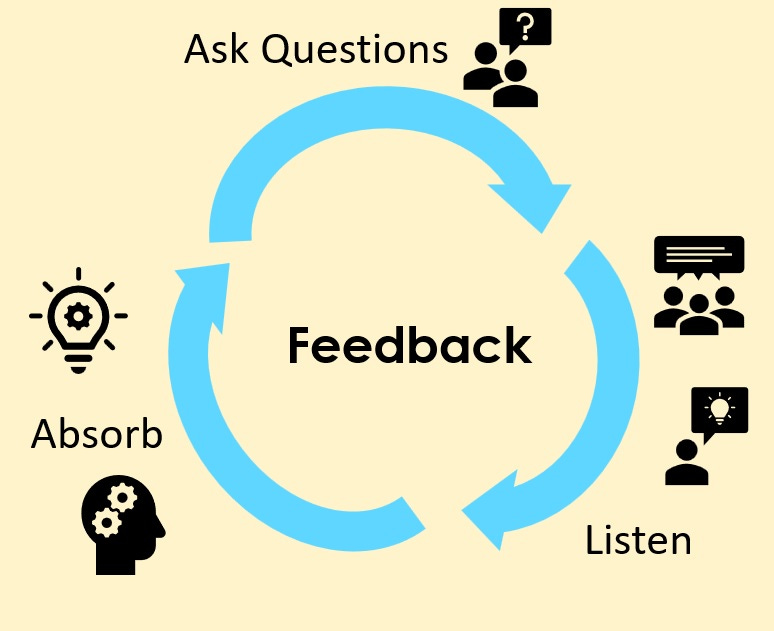Blogs
How to Create a Feedback Loop That Actually Builds Trust (Not Just Data Points)

There’s a difference between listening and actually hearing people, and your audience knows the difference. In the world of digital advocacy, civic action, and political communication, feedback loops are essential. But knowing how to create a feedback loop that works—that’s where most campaigns and organizations still fall short.
It’s not enough to post a survey and call it community engagement. If you’re asking people what they think, you better be ready to show them that their input shaped what comes next. That’s how you build trust, buy-in, and momentum. I’ve seen feedback loops done right, where communities felt heard and energized. I’ve also seen campaigns collect feedback and do nothing with it… and watched people walk away in frustration.
Let’s break down what it really takes to build a loop that closes—the kind that makes people feel valued, not extracted.
Step 1: Know Why You’re Asking Before You Ask
If your team is collecting input without a clear purpose, don’t hit “publish.” Before creating a poll, form, open call, or campaign thread, clarify:
- What decisions will this feedback inform?
- Are we genuinely open to change based on what we hear?
- How will we communicate outcomes back to the community?
One of the most important lessons in how to create a feedback loop is to never ask for opinions you have no intention of acting on. Your audience is smart and burned out on fake listening.
At Call to Activism, we don’t gather feedback just to look responsive. We gather it to refine narratives, test digital strategies, and spotlight underrepresented voices in the work ahead.
When you’re clear on your “why,” your audience responds with focus and trust.
Step 2: Make Participation Easy, Fast, and Familiar
Attention spans are short. Barriers are high. So your feedback process has to be frictionless. Here’s what that looks like in 2025:
- Mobile-first surveys with 3–5 questions, max
- One-tap polls in Instagram Stories or X (Twitter)
- Short-form audio or video comment options
- Embedded feedback forms in emails or landing pages
Also, you should never underestimate the power of a simple question post like, “What would you tell your local rep if you had 60 seconds?” It’s low-lift, emotion-driven, and generates insights quickly.
The more you mirror the way people already communicate, the stronger your participation rate. Don’t make them jump through hoops. Invite them into a conversation where their voice fits.
Step 3: Prioritize Qualitative Feedback—Not Just Quantitative
Metrics matter. But stories move people. The best feedback loops don’t just collect multiple-choice answers. They listen for themes, frustrations, contradictions, and emotional triggers.
I always recommend:
- Adding one open-ended question to every form: “What’s missing from the conversation right now?”
- Reading comments out loud in internal strategy sessions—human voices build empathy.
- Categorizing responses by emotional tone, not just topic: angry, confused, hopeful, motivated.
Learning how to create a feedback loop means learning how to hear what’s unsaid. Quantitative data tells you what’s happening. Qualitative input tells you why it matters.
Step 4: Close the Loop Visibly and Publicly
The #1 way to lose trust in a feedback loop? Ask for input and never acknowledge it again. Your community doesn’t just want to submit ideas; they want to see what happens next.
Here’s how to close the loop:
- Create a public recap: “Here’s what we heard from 1,200 responses across the country.”
- Highlight examples: “You told us local school board issues matter. Our next series will focus on that.”
- Give credit: “This campaign idea came directly from community feedback in last month’s survey.”
- Show disagreement respectfully: “Some asked for X, others for Y. Here’s how we’re balancing both.”
I’ve done this with content rollout plans, issue prioritization, and even guest selection for interviews. When people feel seen, they lean in further.
Step 5: Build Feedback Into the Ongoing Culture
Feedback shouldn’t be a campaign stunt. It should be a recurring rhythm. Make it part of your workflow:
- Do quarterly “Pulse Checks”
- Add a one-question poll to every newsletter
- Host a monthly AMA or digital town hall
- Rotate feedback formats: video replies, Slack channels, live streams
More importantly, empower someone on your team to own the loop. This isn’t just community management. It’s movement-building.
In Joe Gallina’s work, we’ve seen that the best-performing content doesn’t just reflect what people think—it’s informed by what they’ve already said. And that kind of alignment only comes from loops that work.
Conclusion
If you want your campaign, movement, or platform to grow, you need more than good messaging. You need feedback loops that are real, responsive, and rooted in humility. People don’t just want to be heard—they want to see themselves in the outcome.
So if you’re serious about learning how to create a feedback loop, don’t start with forms. Start with a mindset. Commit to doing something with what you hear. Then build a process around that commitment, and let people see it unfold.
That’s how trust grows. And that’s how movements stay alive.
